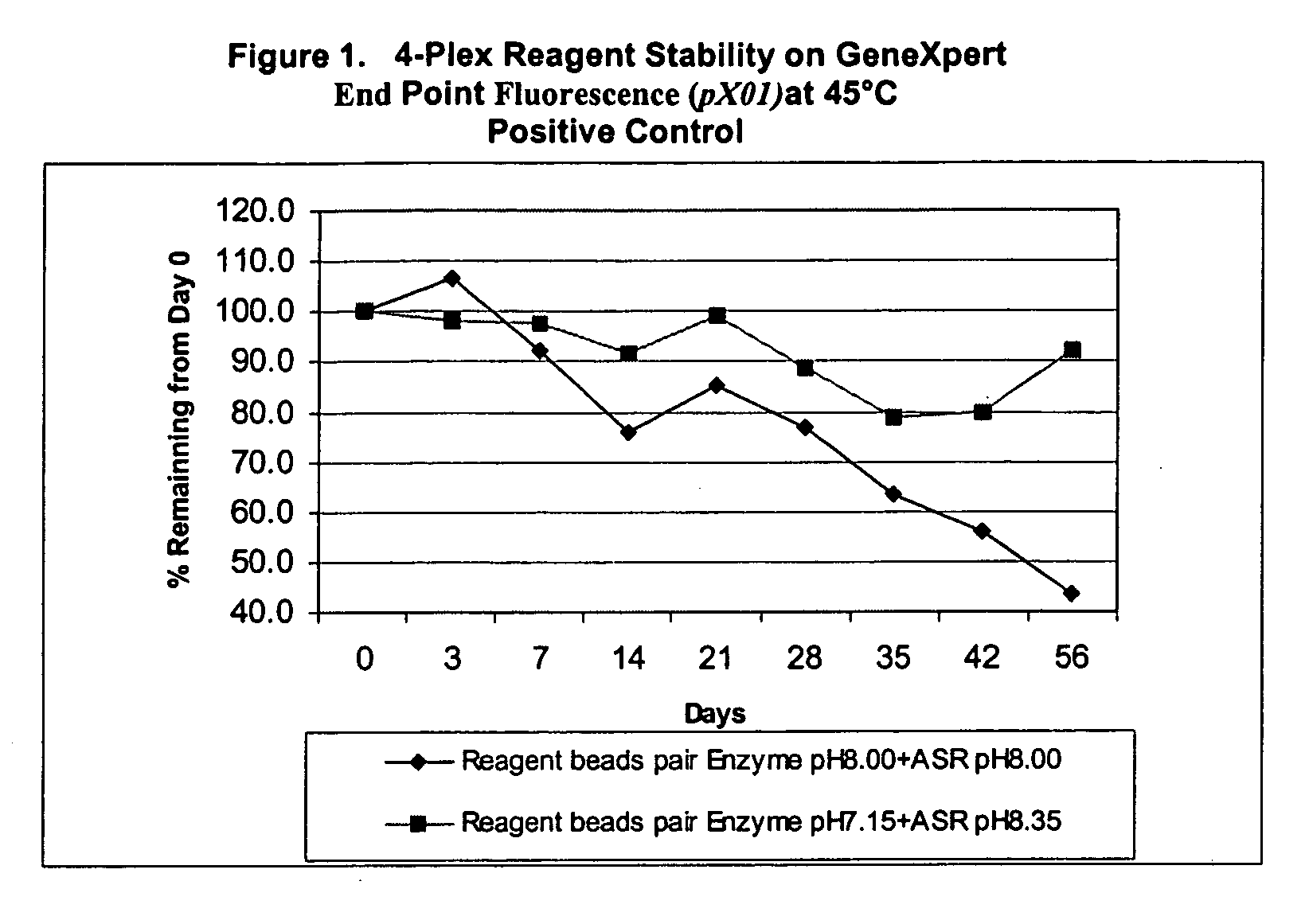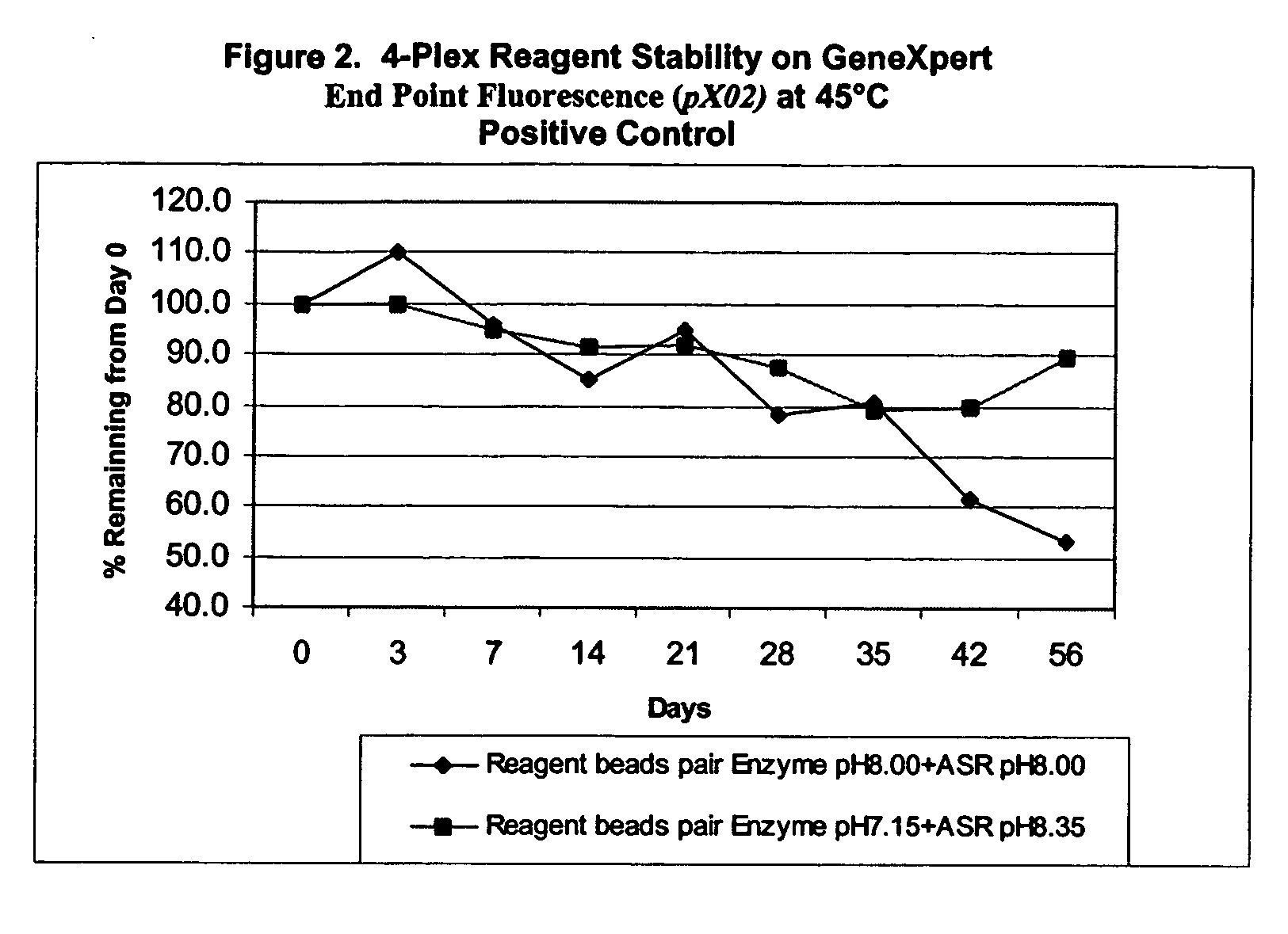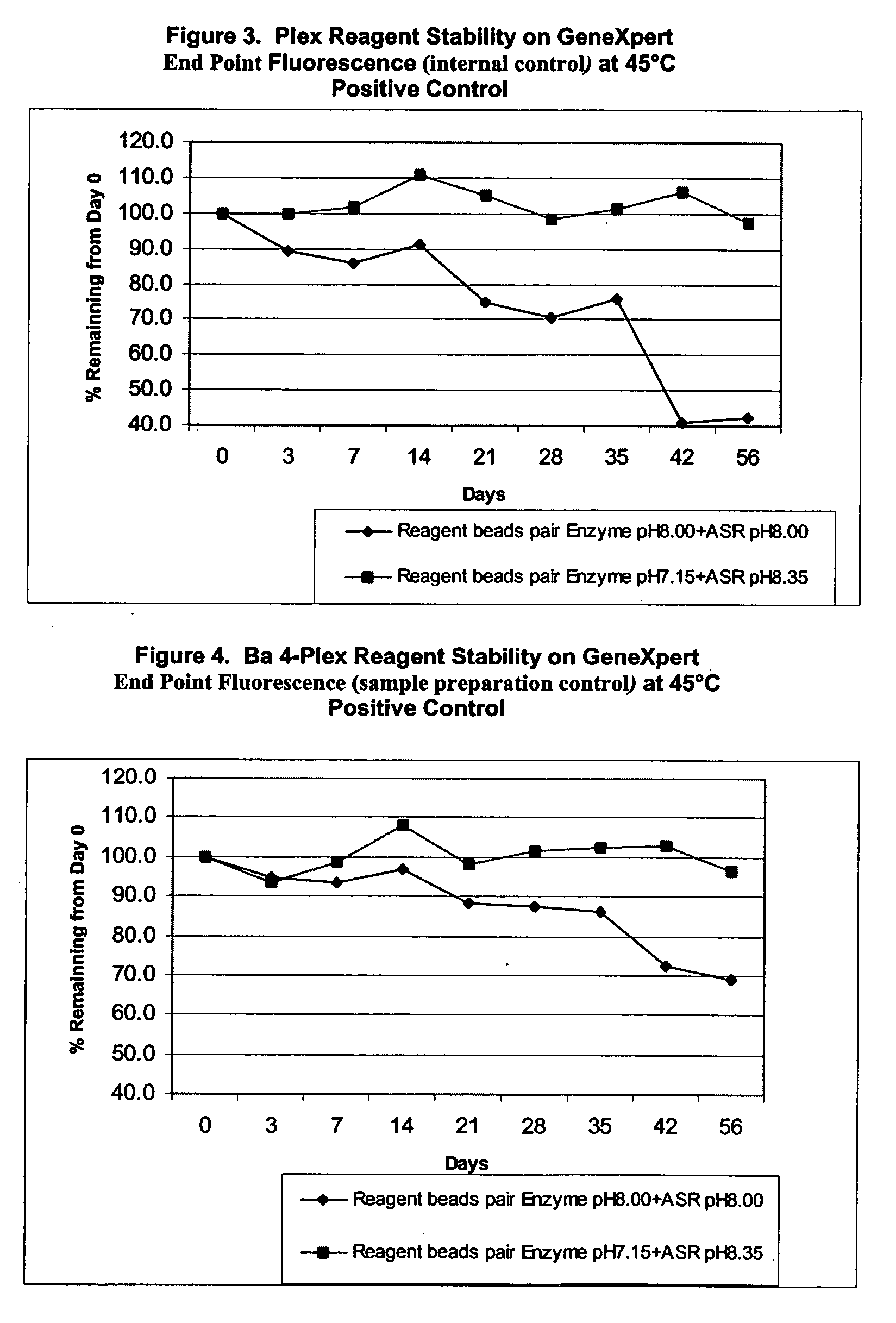Multiple bead reagent system for protein based assays with optimized matrices
a protein based assay and multi-bead technology, applied in the field of multi-bead assay system for protein based assay, can solve the problems of inability to optimize the optimal storage of protein reagents for biological reactions, and affecting the effect of biological reaction efficiency
- Summary
- Abstract
- Description
- Claims
- Application Information
AI Technical Summary
Benefits of technology
Problems solved by technology
Method used
Image
Examples
example 1
Making Reagent Beads
[0132] I. Lyophilization Formulations
[0133] To test the stabilization and potentiation properties of various lyophilization formulations, two sets of lyophilization buffers were prepared. The first set of lyophilization buffers employs separate buffers for the enzyme and for the assay specific reagents (potentiation bead). The buffers are distinguished by the pH and the molarity of the buffering agent.
[0134] The second lyophilization buffer set is a single universal buffer formulated for use with both the enzyme and with the assay specific reagents.
[0135] Table 1 provides the formulation for the lyophilization buffer used to prepare the protein stabilization matrix for the enzyme reagent. Table 2 provides the formulation for the lyophilization buffer used to prepare the potentiation bead matrix comprising the assay specific reagents.
TABLE 1Lyophilization Buffer for Enzyme Reagent pH 7.15 FormulationTo this formulation the appropriate components are added4X ...
example 2
Evaluating the Stability of Protein Reagents for PCR Assay
[0143] II. Stability of Ba 4-Plex Reagents
[0144] Further experiments tested the stability of the reagent formulations in multiplex PCR reactions involving three or more target templates. A “fourplex” assay was carried out to make this determination. The fourplex assay was developed at Cepheid (Hoffmaster et al. (2002) Emerging Infective Diseases vol. 8:1178-1181).
[0145] The fourplex assay involves specific detection of two virulence plasmids from Bacillus anthracis, pXO1 and pXO2, and simultaneous specific detection of two internal controls. Target probes to pXO1 and pXO2, were labeled with FAM (6-carboxy-fluorescein phosphoramidite, pXO1) and LIZ (pXO2) dyes and the internal control probes were labeled with ROX and VIC.
[0146] The 4-Plex Reagent stability was established by comparison of the two sets of formulations described above. Stability of reagents was tested based on storage of the reagents at accelerated temperatu...
example 3
Carrying Out PCR Assay with Reagent Beads
[0149] III. PCR Examples Materials and Instruments
Assay Protocols:
[0150] All the assays were run on Cepheid Smart Cyclere, Cepheid Inc., Sunnyvale, Calif. using software v2.0c: S / N 200019, 200016, 900039, 900339, and 900211
[0151] Computers S / N: 8BDW021, 23WSG31
[0152] Ba Lysed spores or DNA
[0153] Enzyme; Ampli Taq lot #E01902 (Roche)+hot start antibody TAKARA (lot #N1803-1)
[0154] Cepheid Assay specific primers and fluorescent probes
Procedures
[0155] Six replicates for each sample containing 0 (negative control), 0.1 pg, 1.0 pg, 10.0 pg, Ba DNA / 25 μL reaction was assayed for the simplex and duplex assays.
[0156] Simplex assays comprise only one template-primer-probe set, and duplex assays comprise two primer and probe sets.
[0157] And six replicates of samples containing 0 (Negative control), 4×102, 4×103, 4×104 lysed Ba spores per 85 uL reaction were assayed for the 4-Plex assay.
PUM
| Property | Measurement | Unit |
|---|---|---|
| volume | aaaaa | aaaaa |
| volume | aaaaa | aaaaa |
| sublimation point | aaaaa | aaaaa |
Abstract
Description
Claims
Application Information
 Login to View More
Login to View More - R&D
- Intellectual Property
- Life Sciences
- Materials
- Tech Scout
- Unparalleled Data Quality
- Higher Quality Content
- 60% Fewer Hallucinations
Browse by: Latest US Patents, China's latest patents, Technical Efficacy Thesaurus, Application Domain, Technology Topic, Popular Technical Reports.
© 2025 PatSnap. All rights reserved.Legal|Privacy policy|Modern Slavery Act Transparency Statement|Sitemap|About US| Contact US: help@patsnap.com



